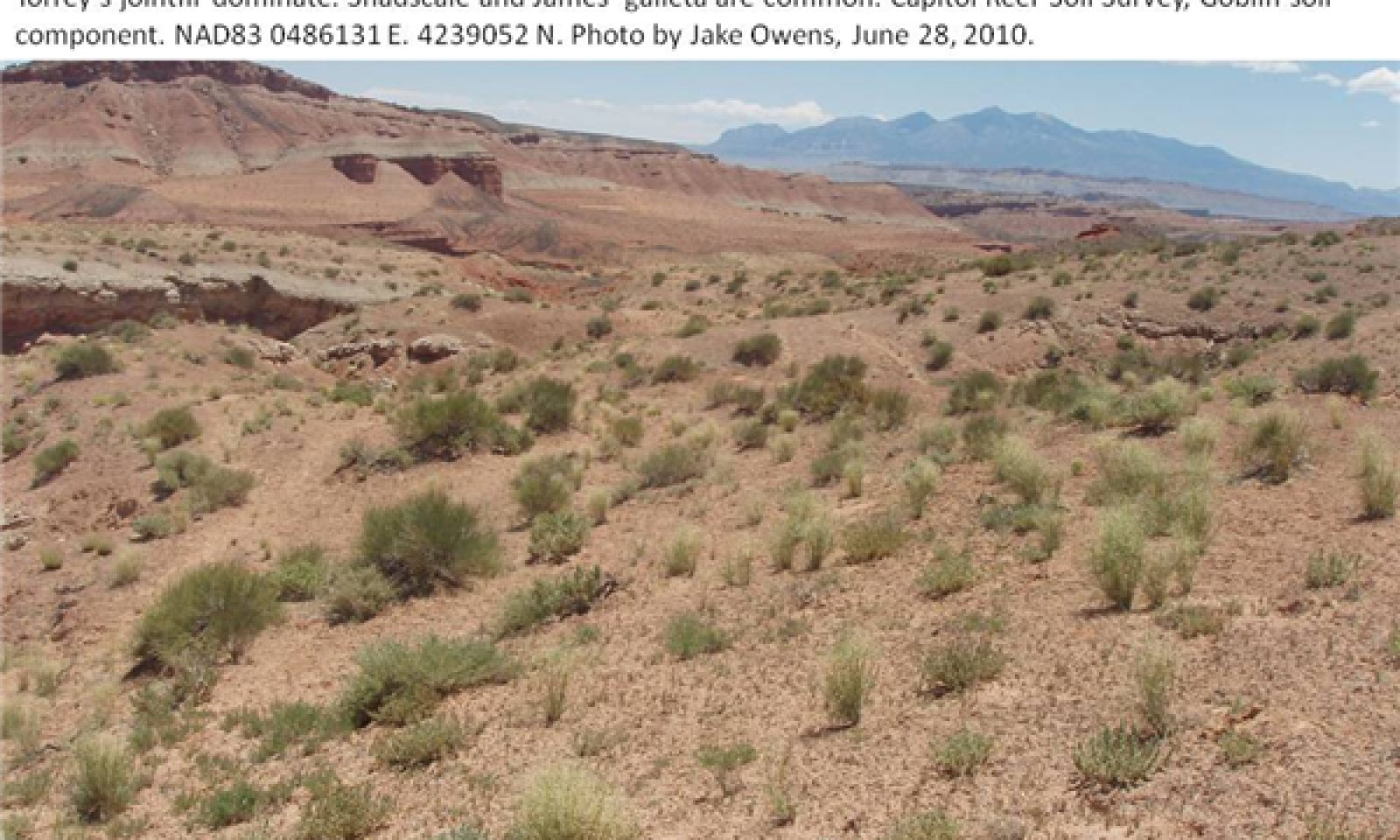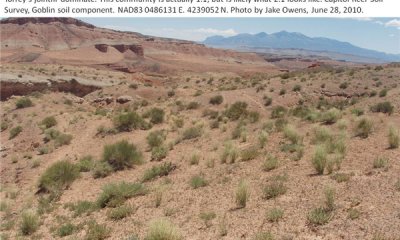
Desert Shallow Gypsum (Torrey's Jointfir)
Scenario model
Current ecosystem state
Select a state
Management practices/drivers
Select a transition or restoration pathway
- Transition T1A More details
-
No transition or restoration pathway between the selected states has been described
Target ecosystem state
Select a state
Description
The main driver of plant community change in the reference state is drought. In wet years, this site can support perennial grasses, particularly James' galleta and Indian ricegrass. However, due to harsh gypsum soils and low water-holding capacity, dry years can result in a loss of perennial grasses. The resillience of this site to drought conditions will be lower on shallower soils with lower water holding capacity and/or harsher soil conditions.
This state is susceptible to non-native invasive species establishment. Disturbances such as livestock grazing and recreation can increase the likelihood of invasion by promoting germination sites and/or seed sources for non-native species. However, Russian thistle is capable of establishing on this site in the absense of disturbance.
Submodel
Description
The invaded state resembles the reference state in both community structure and function, but non-native species, notably Russian thistle, are present. As a result, the resilience of the state is somewhat reduced and the possibility of further degradation is greater.
Submodel
Mechanism
This transition occurs with the establishment of non-native invasive species. Disturbances that promote this transition include season long continuous grazing of perennial grasses, prolonged drought, recreation or other surface disturbances. However, invasive species such as Russian thistle can invade intact perennial plant communities with little to no disturbance. Once invasive plants are found in the plant community, a return to the reference state is not likely.
Model keys
Briefcase
Add ecological sites and Major Land Resource Areas to your briefcase by clicking on the briefcase (![]() ) icon wherever it occurs. Drag and drop items to reorder. Cookies are used to store briefcase items between browsing sessions. Because of this, the number of items that can be added to your briefcase is limited, and briefcase items added on one device and browser cannot be accessed from another device or browser. Users who do not wish to place cookies on their devices should not use the briefcase tool. Briefcase cookies serve no other purpose than described here and are deleted whenever browsing history is cleared.
) icon wherever it occurs. Drag and drop items to reorder. Cookies are used to store briefcase items between browsing sessions. Because of this, the number of items that can be added to your briefcase is limited, and briefcase items added on one device and browser cannot be accessed from another device or browser. Users who do not wish to place cookies on their devices should not use the briefcase tool. Briefcase cookies serve no other purpose than described here and are deleted whenever browsing history is cleared.
Ecological sites
Major Land Resource Areas
The Ecosystem Dynamics Interpretive Tool is an information system framework developed by the USDA-ARS Jornada Experimental Range, USDA Natural Resources Conservation Service, and New Mexico State University.






